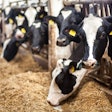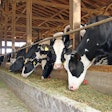
Congress agreed on a $900 billion COVID stimulus package, which will include up to $13 billion in funding that directly benefits agriculture.
Nearly $1 billion will support a dairy donation program and supplemental Dairy Margin Coverage payments for small and medium-sized producers.
More help will be made available to specialty and non-specialty crop growers, and the Paycheck Protection Program (PPP) will be expanded, which will allow small farmers to continue operating and paying their employees.
Many farmers and ranchers who were previously left out of aid will now qualify for assistance, including growers who were forced to euthanize livestock during the initial wave of the pandemic.
The American Farm Bureau Federation worked for several months to ensure the needs of America’s farmers and ranchers were brought forward to lawmakers as they considered the latest stimulus package.
“We’re pleased that Congress understands the toll the pandemic continues to take on farmers, ranchers and rural Americans,” says AFBF President Zippy Duvall. “Farmers who were left out of previous aid packages or whose losses were far more devastating than recognized in initial aid are grateful that their families will be helped, too.
"We recognize the need is great across our entire economy and farm families will join the rest of America in our determination to recover from the hardships caused by the COVID-19 pandemic.”
Highlights of the coronavirus stimulus bill include:
- 80% reimbursement for losses due to premature euthanization or canceled orders
- $20/planted acre for non-specialty crops
- Crop insurance payments and disaster payments may be used to calculate 2019 sales
- $7 billion is allocated for broadband, including $300 million for rural broadband and $250 million for telehealth
- PPP funding may be used for COVID mitigation expenses
- Expenses paid with PPP loans will now be allowed as a tax deduction
- 15% increase in SNAP benefits
On Monday, House Agriculture Committee Chairman Collin C. Peterson of Minnesota pointed specifically to the inclusion of important support for those who were left out earlier assistance, including contract livestock and poultry growers, ethanol producers that saw a drop in demand, and livestock and poultry producers who had to depopulate herds and flocks as a result of supply chain disruptions.
The bill also contains much-needed help for dairy farmers, funding for small and mid-sized livestock processors to attain federal inspection in order to accommodate increased demand, as well as animal health work and grants to state departments for ongoing farm stress programs.
“The effects of this pandemic are still being seen all along the food supply chain,” Peterson says. “Folks are still struggling to get enough to eat, and farmers are still reeling from disruptions to the marketplace. This bill isn’t perfect, but it reflects a compromise and goes a long way toward getting us through this hard time and back to normal. I urge my colleagues to support it.”
Kevin Scott, ASA president and soy grower from Valley Springs, SD, noted that many measures in the relief package and the attached omnibus are priorities for which soy growers have diligently pushed: enhanced assistance under the Coronavirus Food Assistance Program and other direct aid to producers —including a shot in the arm for PPP and per-acre payments for eligible row crop producers — broadband funding, WRDA reauthorization and more.
“The bill also provides block grant funding for state departments of agriculture to support farm stress programs. Back in April, shortly after all this really escalated, the ASA COVID Task Force highlighted the need for stress relief across our ag communities—and ASA worked in conjunction with our state soy affiliates, the United Soybean Board, and even several interested state departments of agriculture and universities—on the#SoyHelp程序提供的工具和资源need. So, this is just one more component included in this legislative package that is keenly important for our ag communities,” says Scott, who led the task force for months.
President Trump is expected to sign the bill soon.
A full breakdown of the food and agriculture provisions in the bill is available byclicking here.





















